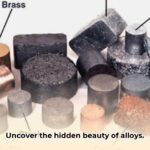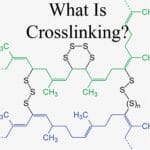Ever wondered about that shiny, silvery metal gracing antique silverware or musical instruments? Chances are, it’s German silver, a surprisingly fascinating alloy. Despite its misleading name, it contains absolutely no silver! This article explores the world of German silver, revealing its unique properties, rich history, and diverse applications. We’ll simplify the science behind it, demonstrating its appeal and identifying where you might encounter it. Plus, we’ll delve into its manufacturing and future prospects.
German Silver: Unveiling its Secrets and Nickel Alloys
German silver, also known as nickel silver, maillechort, German silver, argentan, new silver, nickel brass, albata, or alpacca is a cupronickel (copper with nickel) alloy with the addition of zinc. While dubbed “silver,” it contains no silver whatsoever! The usual formulation is 60% copper, 20% nickel and 20% zinc. This versatile metal results from a clever combination of copper, nickel, and zinc. The precise proportions of these elements grant German silver its distinctive properties, establishing it as a sought-after alloy for centuries. It’s like baking: the perfect result depends on the exact ratio of each element. All modern, commercially important, nickel silvers contain zinc and are sometimes considered a subset of brass.
The Amazing Properties of a Not-So-Silver Alloy and Its Tensile Strength
What distinguishes German silver? Its unique metallic combination offers impressive advantages:
- Resisting the Elements: Unlike pure copper or silver, German silver excels at resisting corrosion and tarnishing, preserving the shine and beauty of jewelry or cutlery.
- Easy to Shape: Its workability allows for intricate designs in jewelry, musical instruments, and intricate mechanical components. It’s malleable and shapes well.
- Conducting Electricity (Sort Of): While not as conductive as pure copper, it conducts electricity reasonably well, making it suitable for electrical applications where high conductivity doesn’t take priority.
- Tough & Durable: This alloy withstands wear and tear, enhancing its longevity and suitability for applications requiring durability. It’s difficult to bend or break, ensuring longevity.
A Global History: From Ancient China to Modern Uses in Silverware
The history of German silver spans continents and centuries. Originating in ancient China, where it was smelted from readily available unprocessed ore and known as “Paktong” or “Baitong” (白銅), literally “white copper”, and valued for its unique properties. During the Qing dynasty, it was “smuggled into various parts of the East Indies”, despite a government ban on the export of nickel silver. European artisans later rediscovered and refined its production, unlocking its potential and expanding its applications. German artificial recreation of the natural paktong ore composition began to appear from about 1750 onward. In 1770, the Suhl metalworks were able to produce a similar alloy. It’s a story of how a material from one region journeyed to and impacted diverse cultures.
The name “German silver” is a historical quirk. Not invented in Germany, the name stuck in Europe, becoming widespread despite its geographical inaccuracy. The manufacturer Berndorf (founded in 1843) named the trademark brand Alpacca, which became widely known in northern Europe for nickel silver. Its resemblance to silver, combined with superior corrosion resistance and machinability, made it a popular and affordable substitute.
A Versatile Material with Countless Uses in Musical Instruments
German silver has found its way into numerous applications, from antique cutlery handles and musical instrument details, electric guitar pickup parts to automotive parts and high-end equestrian gear. Musical instruments, including the flute, saxophone, trumpet, and French horn. Many professional-level French horns are entirely made of nickel silver. Some saxophone manufacturers, such as Keilwerth, offer saxophones made of nickel silver (Shadow model); these are far rarer than traditional lacquered brass saxophones. Student-level flutes and piccolos are also made of silver-plated nickel silver, although upper-level models are likely to use sterling silver. It is also preferred for the track in electric model railway layouts, as its oxide is conductive. Better quality keys and lock cylinder pins are made of nickel silver for durability under heavy use. Often, its composition is tweaked to optimize performance for specific uses.
Creating German Silver: Modern Manufacturing and Environmental Concerns in Production
Modern German silver production involves controlled melting and casting to achieve a precise mix of copper, nickel, and zinc for the desired characteristics. With growing environmental awareness, there’s emphasis on sustainable practices. Mining and processing raw materials, especially copper and nickel, can significantly impact the environment. Therefore, efforts prioritize sustainable sourcing and responsible manufacturing to reduce the environmental footprint. Recycling is also gaining traction, minimizing waste and promoting a more environmentally friendly production cycle.
The Composition Matters: Tailoring Properties to Needs and Electrical Conductivity
The exact blend of copper, nickel, and zinc greatly influences German silver’s final properties. Small ratio adjustments can significantly alter its strength, corrosion resistance, and machinability:
| Approximate Composition (%) | Tensile Strength (MPa) | Corrosion Resistance | Machinability | Electrical Conductivity (%) |
|---|---|---|---|---|
| Copper 60%, Nickel 20%, Zinc 20% | 300-400 | High | Good | 15-20 |
| Copper 65%, Nickel 18%, Zinc 17% | 350-450 | Moderate | Excellent | 18-22 |
| Copper 70%, Nickel 15%, Zinc 15% | 400-500 | Moderate | Good | 20-25 |
(Note: These values are approximate and may vary based on manufacturing processes and any additional alloying elements.)
The Future is Bright for German Silver: Innovation and Sustainability in the Alloy
German silver’s future is promising. Researchers are continually refining its properties, developing alloys with increased strength and corrosion resistance. Experts predict a focus on tailoring German silver for specialized niche applications where its unique properties are invaluable. Moreover, sustainability will likely drive innovation in manufacturing processes and recycling efforts. This fascinating material, with a history spanning centuries, has a bright future driven by scientific advancements and environmental responsibility. Its combination of properties suggests that German silver will remain significant across various industries for years.
How to Choose the Best Nickel Silver Alloy for Specific Applications
Key Takeaways:
- Nickel silver, despite its name, contains no actual silver. It’s a durable, corrosion-resistant alloy primarily composed of copper, nickel, and zinc.
- The varying ratios of these base metals significantly impact the alloy’s properties, affecting its suitability for different applications.
- Understanding the specific requirements of your project—strength, malleability, corrosion resistance, etc.—is crucial for selecting the right nickel silver alloy.
- Ammonia exposure is a notable weakness; avoid nickel silver where ammonia is present.
- Several standardized alloy types exist (e.g., C75200, C77000), each offering unique properties.
Understanding Nickel Silver’s Composition and Corrosion Resistance
Nickel silver, also known as German silver, is a family of copper-nickel-zinc alloys. The precise blend of these metals determines the final product’s characteristics. A higher nickel percentage boosts corrosion resistance, while zinc affects the alloy’s malleability and workability.
Delving into Alloy Properties and Its Malleability
Different nickel silver alloys possess distinct properties. Some are strong and durable, ideal for cutlery or hardware. Others are more malleable, perfect for intricate jewelry designs. How to choose the best nickel silver alloy for specific applications depends on understanding these variations. For instance, a high nickel content increases corrosion resistance,making it suitable for marine applications, while a higher zinc content may improve machinability for easier manufacturing.
| Alloy Designation | Approximate Composition (%) | Key Properties | Typical Applications |
|---|---|---|---|
| C75200 | Cu 65, Ni 18, Zn 17 | High strength, good corrosion resistance | Hardware, cutlery |
| C77000 | Cu 62, Ni 18, Zn 20 | Excellent machinability, good corrosion resistance | Musical instruments, decorative items |
Exploring the Applications of Nickel Silver and Modern Electronics
Nickel silver’s versatility is its strength. From vintage silverware to modern electronics, its presence is widespread. It is used in zippers, costume jewelry and for making musical instruments (e.g., flutes, clarinets). Its pleasing silvery sheen and durability make it a popular option for jewelry and marine hardware. Musicians appreciate its use in musical instruments, particularly wind instruments, for its acoustic properties. Not all nickel silver is created equal. How to choose the best nickel silver alloy for specific applications requires nuanced understanding of each alloy’s strengths and weaknesses.
Navigating the Manufacturing Process and Recycling Nickel Silver
Producing nickel silver involves melting and casting the constituent metals in the desired proportions. Careful control over temperature and composition is crucial. The resulting ingots are then processed through rolling, drawing, or other methods to form sheets, wires, or other shapes. The sustainability of this process is increasingly important. Recycling nickel silver reduces waste and environmental impact.
Addressing the Ammonia Issue: A Critical Consideration and Stress Corrosion Cracking
While generally corrosion-resistant, nickel silver has a significant drawback: susceptibility to stress corrosion cracking when exposed to ammonia. Therefore, it’s crucial to completely avoid this material in applications where ammonia exposure is a possibility. Failure to consider this could lead to catastrophic failures. This is a critical factor when considering how to















